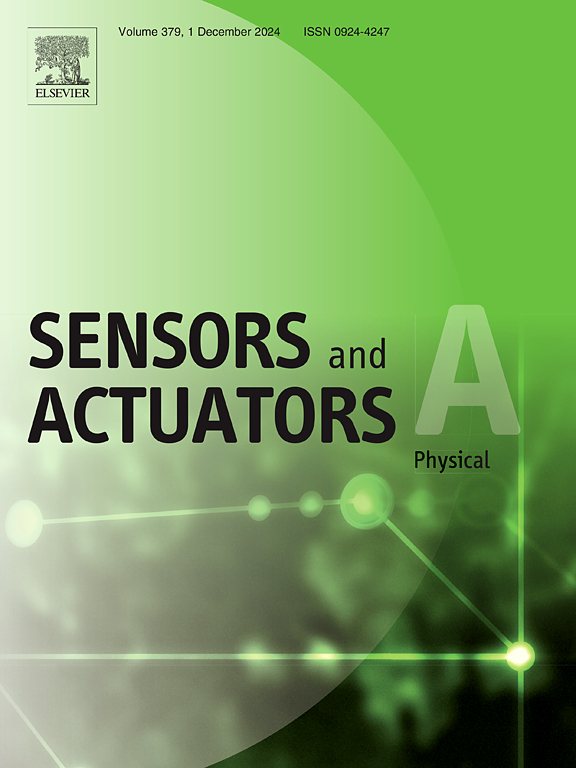Performance analysis of a DC magnetron sputtered Cu2O/TiO2 heterojunction photodetector for short-wavelength detection
IF 4.1
3区 工程技术
Q2 ENGINEERING, ELECTRICAL & ELECTRONIC
引用次数: 0
Abstract
This study details the fabrication of Cu2O/TiO2 heterostructure thin films via DC magnetron sputtering. The post-annealing temperatures were tuned from room temperature to 250 °C to enhance their UV photodetection capabilities. X-ray diffraction (XRD) analysis confirmed the coexistence of Cu2O, CuO, and anatase TiO2 phases, with improved crystallinity and grain growth occurring at higher annealing temperatures. Field Emission Scanning Electron Microscopy (FESEM) and Atomic Force Microscopy (AFM) analysis showed compact films with progressively increasing surface roughness as the annealing temperature was raised. Optical studies indicated enhanced light absorption due to a reduction in defects and improved crystalline quality. Electrical characterization demonstrated rectifying diode behavior, with annealed devices exhibiting reduced series resistance and enhanced photocurrent under UV illumination. The device annealed at 100 °C demonstrated optimal performance, reaching a responsivity of 0.27 A/W, a detectivity of 4.76 × 1010 Jones, a linear dynamic range (LDR) of 21.03 dB, and a rise/fall time of 611/620 ms under 395 nm UV illumination. The rapid photoresponse and increased photocurrent at higher bias voltages underscore efficient charge transport at the Cu2O/TiO2 interface. These findings establish Cu2O/TiO2 heterostructures as highly promising materials for advanced UV photodetectors.
用于短波探测的直流磁控溅射Cu2O/TiO2异质结光电探测器的性能分析
研究了用直流磁控溅射法制备Cu2O/TiO2异质结构薄膜。退火后的温度从室温调到250°C,以增强其紫外光探测能力。x射线衍射(XRD)分析证实了Cu2O、CuO和锐钛矿型TiO2相共存,在较高的退火温度下,结晶度和晶粒生长得到改善。场发射扫描电镜(FESEM)和原子力显微镜(AFM)分析表明,随着退火温度的升高,薄膜表面粗糙度逐渐增加。光学研究表明,由于缺陷的减少和晶体质量的提高,光吸收增强。电特性证明了整流二极管的行为,在紫外线照射下,退火器件显示出串联电阻降低和光电流增强。该器件经100℃退火后表现出最佳性能,在395 nm紫外光照射下,响应率为0.27 a /W,探测率为4.76 × 1010 Jones,线性动态范围(LDR)为21.03 dB,上升/下降时间为611/620 ms。在高偏置电压下,快速的光响应和增加的光电流强调了Cu2O/TiO2界面上有效的电荷传输。这些发现表明Cu2O/TiO2异质结构是一种非常有前途的先进紫外光电探测器材料。
本文章由计算机程序翻译,如有差异,请以英文原文为准。
求助全文
约1分钟内获得全文
求助全文
来源期刊

Sensors and Actuators A-physical
工程技术-工程:电子与电气
CiteScore
8.10
自引率
6.50%
发文量
630
审稿时长
49 days
期刊介绍:
Sensors and Actuators A: Physical brings together multidisciplinary interests in one journal entirely devoted to disseminating information on all aspects of research and development of solid-state devices for transducing physical signals. Sensors and Actuators A: Physical regularly publishes original papers, letters to the Editors and from time to time invited review articles within the following device areas:
• Fundamentals and Physics, such as: classification of effects, physical effects, measurement theory, modelling of sensors, measurement standards, measurement errors, units and constants, time and frequency measurement. Modeling papers should bring new modeling techniques to the field and be supported by experimental results.
• Materials and their Processing, such as: piezoelectric materials, polymers, metal oxides, III-V and II-VI semiconductors, thick and thin films, optical glass fibres, amorphous, polycrystalline and monocrystalline silicon.
• Optoelectronic sensors, such as: photovoltaic diodes, photoconductors, photodiodes, phototransistors, positron-sensitive photodetectors, optoisolators, photodiode arrays, charge-coupled devices, light-emitting diodes, injection lasers and liquid-crystal displays.
• Mechanical sensors, such as: metallic, thin-film and semiconductor strain gauges, diffused silicon pressure sensors, silicon accelerometers, solid-state displacement transducers, piezo junction devices, piezoelectric field-effect transducers (PiFETs), tunnel-diode strain sensors, surface acoustic wave devices, silicon micromechanical switches, solid-state flow meters and electronic flow controllers.
Etc...
 求助内容:
求助内容: 应助结果提醒方式:
应助结果提醒方式:


